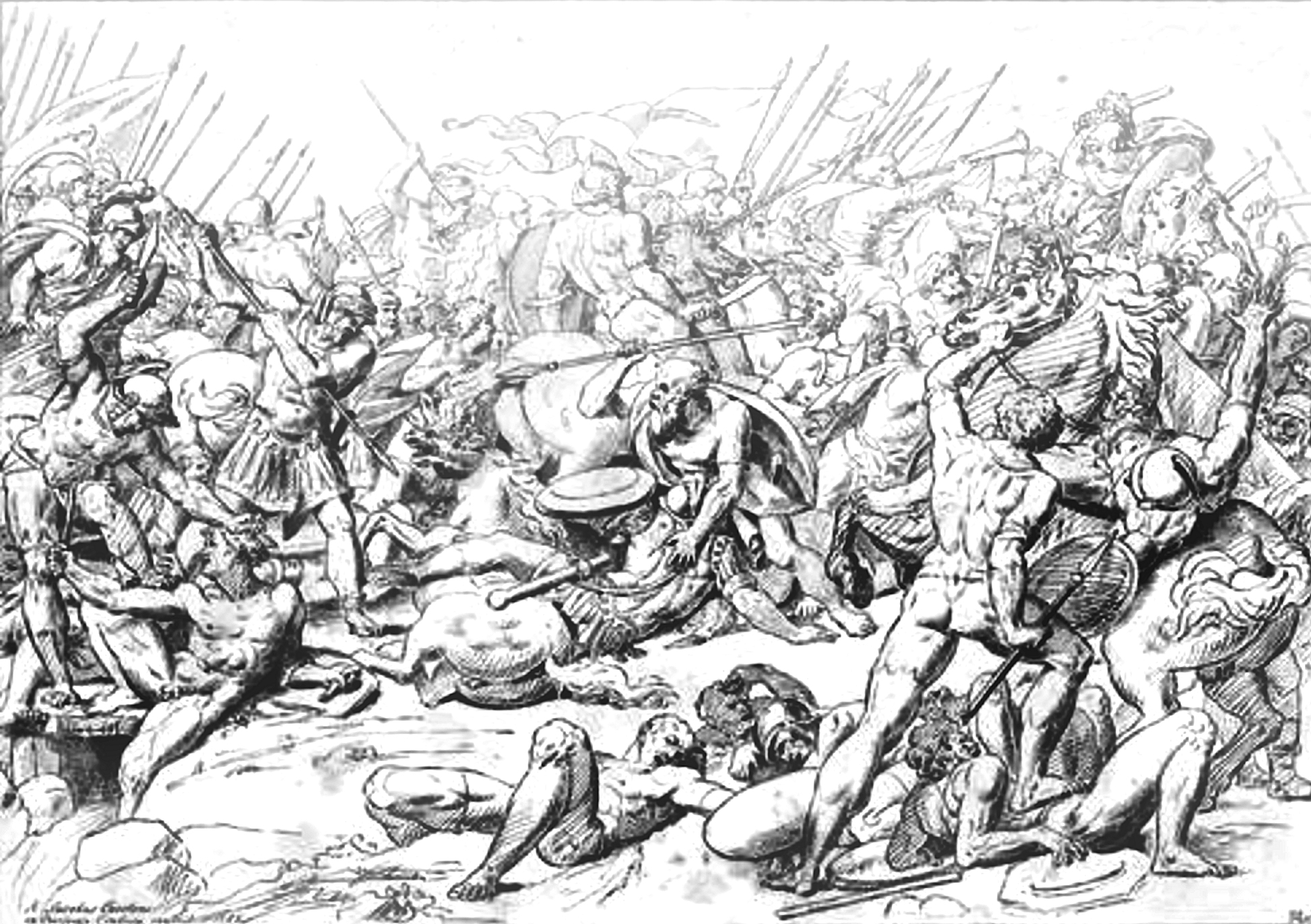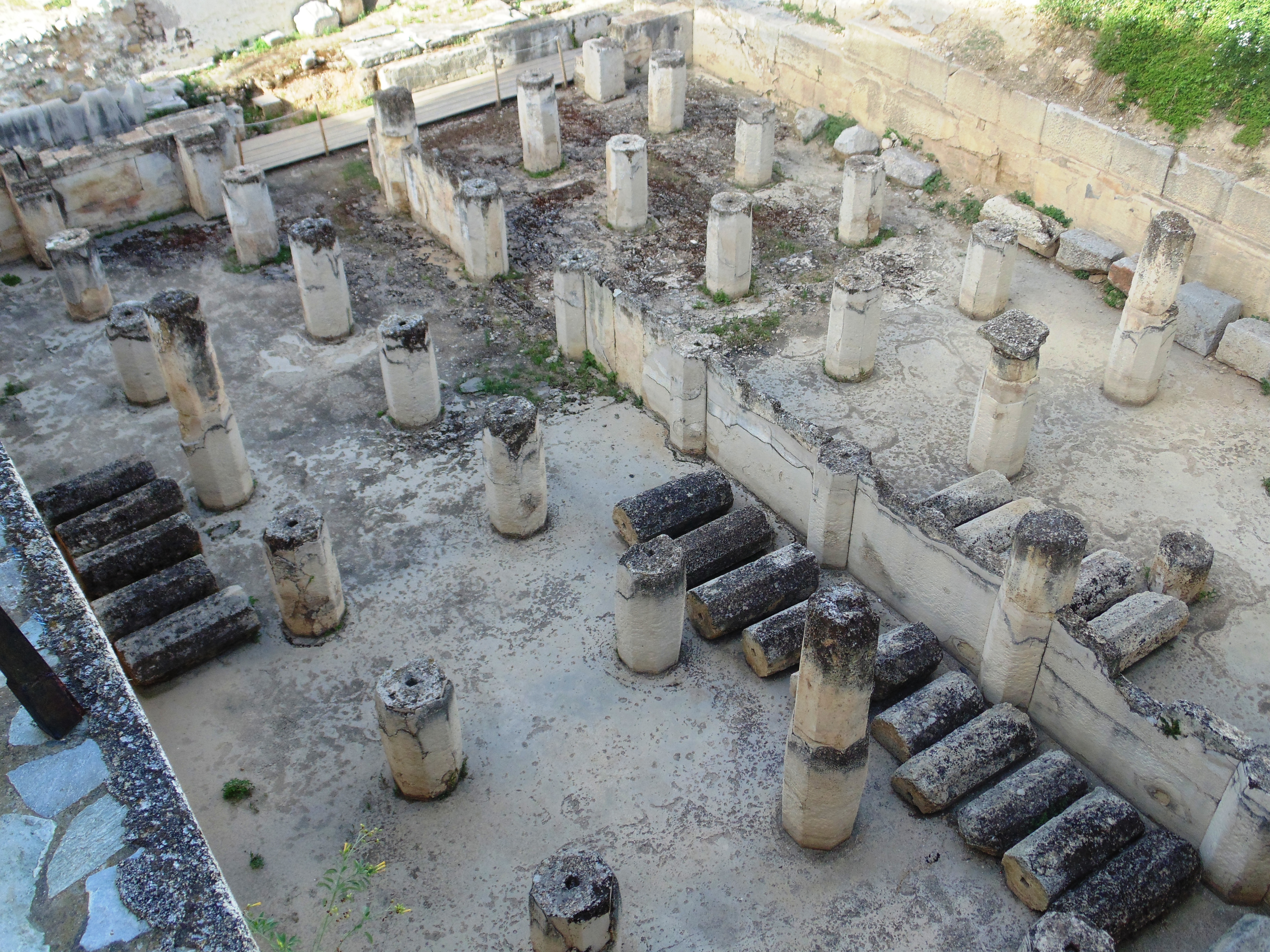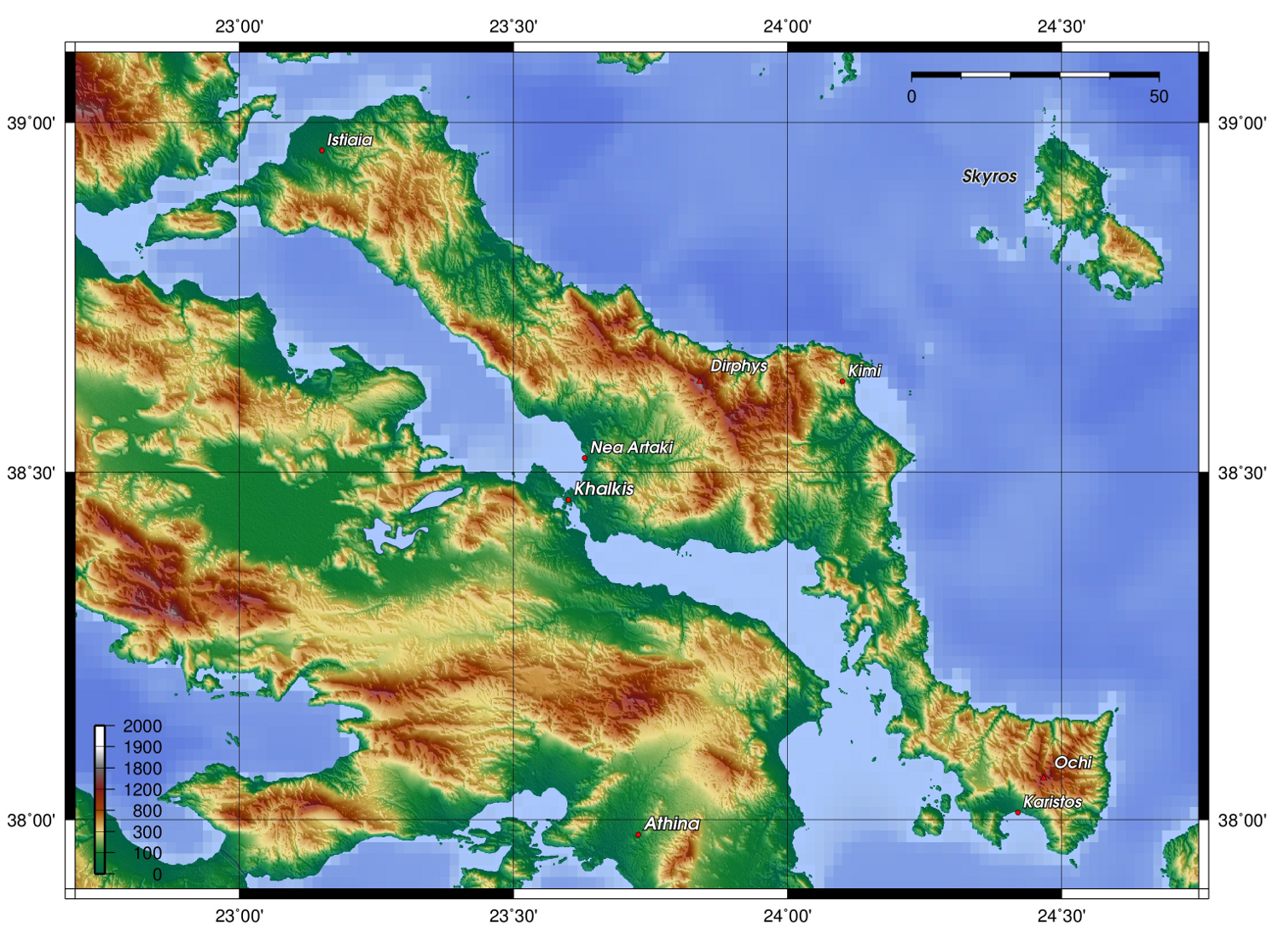|
Battle Of Coronea (447 BC)
The Battle of Coronea (also known as the First Battle of Coronea) took place between the Athenian-led Delian League and the Boeotian League in 447 BC during the First Peloponnesian War. In 457 BC the Athenians had taken control of Boeotia at the Battle of Oenophyta, and spent the next ten years attempting to consolidate the League's power. In 454 BC Athens lost a fleet attempting to aid an Egyptian revolt against Persia; fearing revolts by the other members of the Delian League, Athens moved the treasury to their city from Delos in 453 BC, and signed the Peace of Callias with Persia around 450 BC. The Delian League was essentially an Athenian empire, and while Athens was usually successful at holding their possessions in the Aegean Sea, they were less successful on land. By 447 BC some of the men exiled from Boeotia after the Athenian victory there in 457 BC had returned home and began to take back some of the Boeotian towns. The Athenians under Tolmides, with 1,000 ho ... [...More Info...] [...Related Items...] OR: [Wikipedia] [Google] [Baidu] |
First Peloponnesian War
The First Peloponnesian War (460–445 BC) was fought between Sparta as the leaders of the Peloponnesian League and Sparta's other allies, most notably Thebes, and the Delian League led by Athens with support from Argos. This war consisted of a series of conflicts and minor wars, such as the Second Sacred War. There were several causes for the war including the building of the Athenian long walls, Megara's defection and the envy and concern felt by Sparta at the growth of the Athenian Empire. The First Peloponnesian War began in 460 BC with the Battle of Oenoe, where Spartan forces were defeated by those of Athenian-Argive alliance. At first the Athenians had the better of the fighting, winning the naval engagements using their superior fleet. They also had the better of the fighting on land, until 457 BC when the Spartans and their allies defeated the Athenian army at Tanagra. The Athenians, however, counterattacked and scored a crushing victory over the Boeotians at the ... [...More Info...] [...Related Items...] OR: [Wikipedia] [Google] [Baidu] |
Peace Of Callias
Peace is a state of harmony in the absence of hostility and violence, and everything that discusses achieving human welfare through justice and peaceful conditions. In a societal sense, peace is commonly used to mean a lack of conflict (such as war) and freedom from fear of violence between individuals or groups. Promotion of peace is a core tenet of many philosophies, religions, and ideologies, many of which consider it a core tenet of their philosophy. Some examples are: religions such as Buddhism and Christianity, important figures like Gandhi, and throughout literature like " Perpetual Peace: A Philosophical Sketch" by Immanuel Kant, " The Art of Peace" by Morihei Ueshiba, or ideologies that strictly adhere to it such as Pacifism within a sociopolitical scope. It is a frequent subject of symbolism and features prominently in art and other cultural traditions. The representation of peace has taken many shapes, with a variety of symbols pertaining to it based on cu ... [...More Info...] [...Related Items...] OR: [Wikipedia] [Google] [Baidu] |
Battles Involving Ancient Athens
A battle is an occurrence of combat in warfare between opposing military units of any number or size. A war usually consists of multiple battles. In general, a battle is a military engagement that is well defined in duration, area, and force commitment. An engagement with only limited commitment between the forces and without decisive results is sometimes called a skirmish. The word "battle" can also be used infrequently to refer to an entire operational campaign, although this usage greatly diverges from its conventional or customary meaning. Generally, the word "battle" is used for such campaigns if referring to a protracted combat encounter in which either one or both of the combatants had the same methods, resources, and strategic objectives throughout the encounter. Some prominent examples of this would be the Battle of the Atlantic, Battle of Britain, and the Battle of France, all in World War II. Wars and military campaigns are guided by military strategy, whereas batt ... [...More Info...] [...Related Items...] OR: [Wikipedia] [Google] [Baidu] |
440s BC Conflicts
44 may refer to: * 44 (number) * one of the years 44 BC, AD 44, 1944, 2044 Military *44M Tas, a Hungarian medium/heavy tank design of World War II *44M Tas Rohamlöveg, a Hungarian tank destroyer design of World War II, derived from the 44M Tas tank * 44th Regiment of Foot a British Infantry Regiment(East Essex). Other uses *"Forty-Four", a blues standard *Forty-Fours, a group of islands in the Chatham Archipelago *Forty Four, Arkansas, an unincorporated community in Izard County, Arkansas * ''44'' (album), a 2020 quadruple album by Joel Plaskett *"44", a song by Bad Gyal featuring Rema from '' Warm Up'' *"Forty Four", a song by Karma to Burn from ''Appalachian Incantation'' * .44 caliber, a family of firearms and firearm cartridges ** .44 Special, a revolver cartridge ** .44 Magnum, a large revolver cartridge evolved from the .44 special *44 Nysa, a main-belt asteroid *DAF 44, a small family car *The international calling code for United Kingdom * Barack Obama, the 44th Presiden ... [...More Info...] [...Related Items...] OR: [Wikipedia] [Google] [Baidu] |
447 BC
__NOTOC__ Year 447 BC was a year of the pre-Julian Roman calendar. At the time, it was known as the Year of the Consulship of Macerinus and Iullus (or, less frequently, year 307 ''Ab urbe condita''). The denomination 447 BC for this year has been used since the early medieval period, when the Anno Domini calendar era became the prevalent method in Europe for naming years. Events By place Greece * Pericles leads Athenian forces in the expulsion of barbarians from the Thracian peninsula of Gallipoli, in order to establish Athenian colonists in the region. Thus Pericles starts a policy of cleruchy (klerouchos) or "out-settlements". This is a form of colonisation where poor and unemployed people are assisted to emigrate to new regions. * A revolt breaks out in Boeotia as the oligarchs of Thebes conspire against the democratic faction in the city. The Athenians, under their general Tolmides, with 1000 hoplites plus other troops from their allies, march into Boeotia to take ... [...More Info...] [...Related Items...] OR: [Wikipedia] [Google] [Baidu] |
Peloponnesian War
The Second Peloponnesian War (431–404 BC), often called simply the Peloponnesian War (), was an Ancient Greece, ancient Greek war fought between Classical Athens, Athens and Sparta and their respective allies for the hegemony of the Ancient Greece, Greek world. The war remained undecided until the later intervention of the Achaemenid Empire, Persian Empire in support of Sparta. Led by Lysander, the Spartan fleet (built with Persian subsidies) finally defeated Athens which began a period of Spartan hegemony over Greece. Historians have traditionally divided the war into three phases. The first phase (431–421 BC) was named the Ten Years War, or the Archidamian War, after the Spartan king Archidamus II, who invaded Attica several times with the full hoplite army of the Peloponnesian League, the alliance network dominated by Sparta (then known as Lacedaemon). The Long Walls of Athens rendered this strategy ineffective, while the superior navy of the Delian League (Athens' all ... [...More Info...] [...Related Items...] OR: [Wikipedia] [Google] [Baidu] |
Sparta
Sparta was a prominent city-state in Laconia in ancient Greece. In antiquity, the city-state was known as Lacedaemon (), while the name Sparta referred to its main settlement in the Evrotas Valley, valley of Evrotas (river), Evrotas river in Laconia, in southeastern Peloponnese. Around 650 BC, it rose to become the dominant military land-power in ancient Greece. Sparta was recognized as the leading force of the unified Greek military during the Greco-Persian Wars, in rivalry with the rising naval power of Classical Athens, Athens. Sparta was the principal enemy of History of Athens, Athens during the Peloponnesian War (431–404 BC), from which it emerged victorious after the Battle of Aegospotami. The decisive Battle of Leuctra against Thebes, Greece, Thebes in 371 BC ended the Spartan hegemony, although the city-state maintained its Independence, political independence until its forced integration into the Achaean League in 192 BC. The city nevertheless recovered m ... [...More Info...] [...Related Items...] OR: [Wikipedia] [Google] [Baidu] |
Megara
Megara (; , ) is a historic town and a municipality in West Attica, Greece. It lies in the northern section of the Isthmus of Corinth opposite the island of Salamis Island, Salamis, which belonged to Megara in archaic times, before being taken by Athens. Megara was one of the four districts of Attica, embodied in the four mythic sons of King Pandion II, of whom Nisos was the ruler of Megara. Megara was also a trade port, its people using their ships and wealth as a way to gain leverage on armies of neighboring poleis. Megara specialized in the exportation of wool and other animal products including livestock such as horses. It possessed two harbors, Pagae to the west on the Corinthian Gulf, and Nisaea to the east on the Saronic Gulf of the Aegean Sea. History Late Bronze Mycenaean period In the Late Bronze Age, Megara features prominently as a small kingdom in the myths and legends of Homer. Megara emerged between two fortified ports, Nisaea on the Saronic Gulf and Pagae on the ... [...More Info...] [...Related Items...] OR: [Wikipedia] [Google] [Baidu] |
Euboea
Euboea ( ; , ), also known by its modern spelling Evia ( ; , ), is the second-largest Greek island in area and population, after Crete, and the sixth largest island in the Mediterranean Sea. It is separated from Boeotia in mainland Greece by the narrow Euripus Strait (only at its narrowest point). In general outline it is a long and narrow island; it is about long, and varies in breadth from to . Its geographic orientation is from northwest to southeast, and it is traversed throughout its length by a mountain range, which forms part of the chain that bounds Thessaly on the east, and is continued south of Euboia in the lofty islands of Andros, Tinos and Mykonos. It forms most of the regional unit of Euboea, which also includes Skyros and a small area of the Greek mainland. Name Like most of the Greek islands, Euboea was known by other names in antiquity, such as ''Macris'' (Μάκρις) and ''Doliche'' (Δολίχη) from its elongated shape, or ''Ellopia'' (after El ... [...More Info...] [...Related Items...] OR: [Wikipedia] [Google] [Baidu] |
Chaeronea
Chaeronea ( English: , ) is a village and a former municipality in Boeotia, Greece, located about 35 kilometers east of Delphi. The settlement was formerly known as (), and renamed to () in 1916. Since the 2011 local government reform it is part of the municipality Livadeia, of which it is a municipal unit. The municipal unit has an area of 111.445 km2, the community is 26.995 km2. Population 993 (2021). It is located near Mount Thourion in the Cephissus river valley, NW of Thebes. History Antiquity First settled in the Prehistoric period at the site now known as Magoula Balomenou (Μαγούλα Μπαλωμένου), its older name was Arne, and it was originally on the shore of Lake Copais (later drained). Chaeronea was subject to Orchomenus which was, beginning in 600 BC, a member of the Boeotian League. In the late 5th century BC, Chaironeia belonged to one of the 11 Boeotian districts along with Acraephnium and Copia. Chaeronea's importance lay in its s ... [...More Info...] [...Related Items...] OR: [Wikipedia] [Google] [Baidu] |
Aegean Sea
The Aegean Sea is an elongated embayment of the Mediterranean Sea between Europe and Asia. It is located between the Balkans and Anatolia, and covers an area of some . In the north, the Aegean is connected to the Marmara Sea, which in turn connects to the Black Sea, by the straits of the Dardanelles and the Bosphorus, respectively. The Aegean Islands are located within the sea and some bound it on its southern periphery, including Crete and Rhodes. The sea reaches a maximum depth of 2,639 m (8,658 ft) to the west of Karpathos. The Thracian Sea and the Sea of Crete are main subdivisions of the Aegean Sea. The Aegean Islands can be divided into several island groups, including the Dodecanese, the Cyclades, the Sporades, the Saronic Islands, Saronic islands and the North Aegean islands, North Aegean Islands, as well as Crete and its surrounding islands. The Dodecanese, located to the southeast, includes the islands of Rhodes, Kos, and Patmos; the islands of Delos and Naxos are wi ... [...More Info...] [...Related Items...] OR: [Wikipedia] [Google] [Baidu] |
Achaemenid Empire
The Achaemenid Empire or Achaemenian Empire, also known as the Persian Empire or First Persian Empire (; , , ), was an Iranian peoples, Iranian empire founded by Cyrus the Great of the Achaemenid dynasty in 550 BC. Based in modern-day Iran, it was the List of largest empires#Timeline of largest empires to date, largest empire by that point in history, spanning a total of . The empire spanned from the Balkans and ancient Egypt, Egypt in the west, most of West Asia, the majority of Central Asia to the northeast, and the Indus Basin, Indus Valley of South Asia to the southeast. Around the 7th century BC, the region of Persis in the southwestern portion of the Iranian plateau was settled by the Persians. From Persis, Cyrus rose and defeated the Medes, Median Empire as well as Lydia and the Neo-Babylonian Empire, marking the establishment of a new imperial polity under the Achaemenid dynasty. In the modern era, the Achaemenid Empire has been recognised for its imposition of a succ ... [...More Info...] [...Related Items...] OR: [Wikipedia] [Google] [Baidu] |







